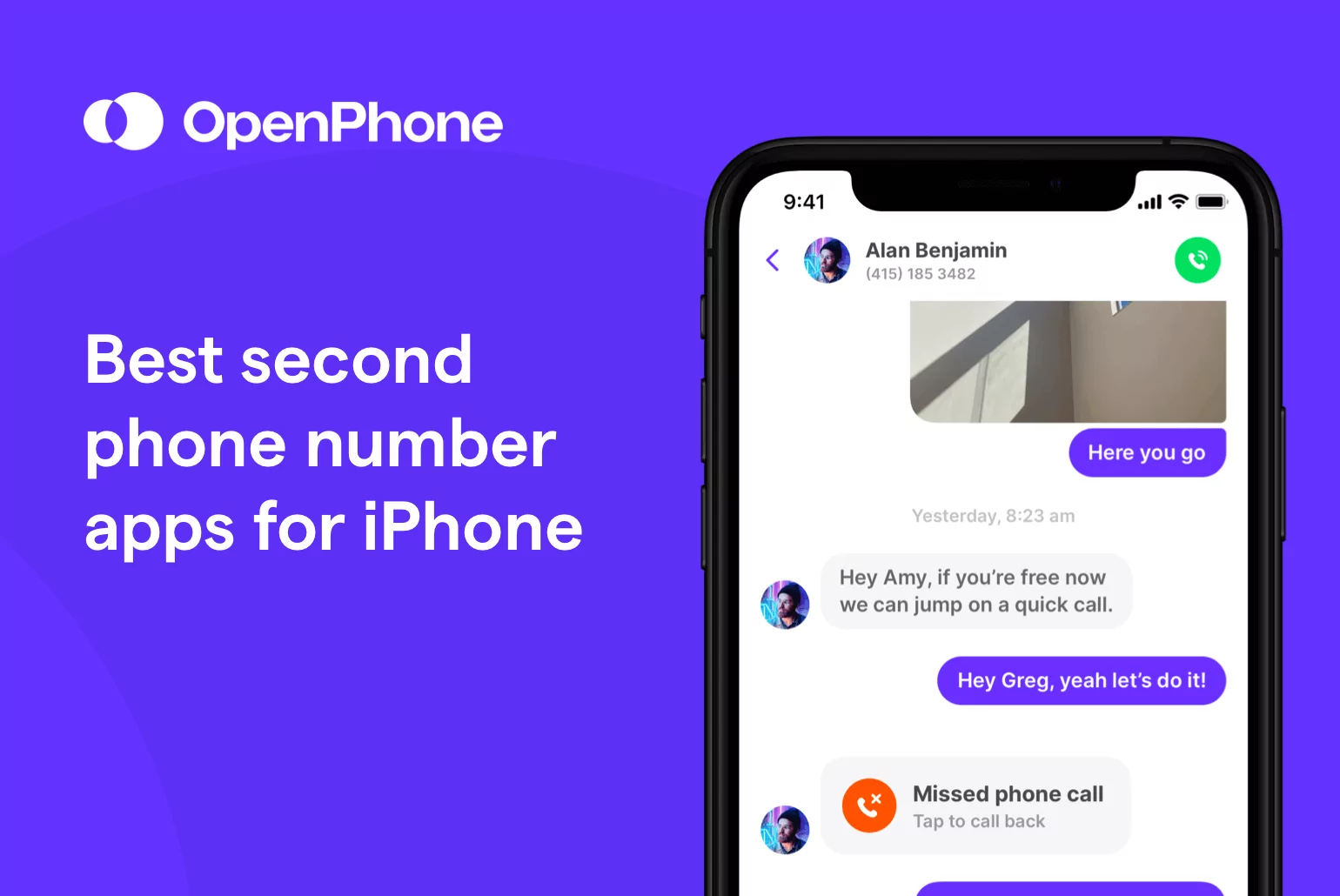Getting a second phone number for iPhone use (and more!) is a great way to separate business and personal calls. You won’t need a new device to get an alternate phone number — but you do need to choose from the dozens of options on the App Store.
This guide will help you narrow down the choices for the best app that lets you get a second phone number on iPhone for your business. Read on to learn about pricing, key features of the best apps, and more.
How the best second phone number apps stack up
Take a quick look at the features of the top apps for getting a second number on iPhone:
| Pricing | Unlimited calling to US & Canada | SMS/MMS to US & Canada | Shared phone numbers | Additional phone numbers | |
|---|---|---|---|---|---|
| OpenPhone | Starts at $15 per user per month | ✓ | ✓ | ✓ | $5 per number per month |
| Google Voice | Starts at $16 per user per month (with Google Workspace) | Unlimited calls to Canada from US only | US customers only | Requires upgrade (ring groups only) | X |
| Sideline | Starts at $9.99 per month | Unlimited calls in US only | X | ✓ (Team Number plan only) | $9.99 per number per month (Enterprise plan only) |
| Burner | Starts at $4.99 per month | ✓ | X | X | Requires upgrade |
| Cloud SIM | Rates vary | X | SMS only | X | $3.99 per number per month (up to 4) |
| Hushed | Starts at $3.99 per month for Unlimited subscription | Requires upgrade | ✓ | X | Requires upgrade |
| Phone.com | Starts at $11.99 per user per month | Requires upgrade | ✓ | $5 per month | $4.99 per number per month |
| Grasshopper | Starts at $28 per month | ✓ | Local numbers only | ✓ | $10 per number per month |
| Line2 | Starts at $13.75 per month | ✓ | ✓ | X | X |
| Vonage | Starts at $19.99 per line per month | ✓ | Local US and Canadian numbers only | X | $14.99 per extension per month |
10 best apps to get a second phone number on iPhone
If you want to have two numbers on a single phone using a second phone number app, assessing the features for business versus personal use means looking through a different lens. Make sure the capabilities of the one you choose align with your team’s needs. With that in mind, here are the top 10 apps for getting a second number on an iPhone.
1. OpenPhone: The best phone app for growing teams and small businesses
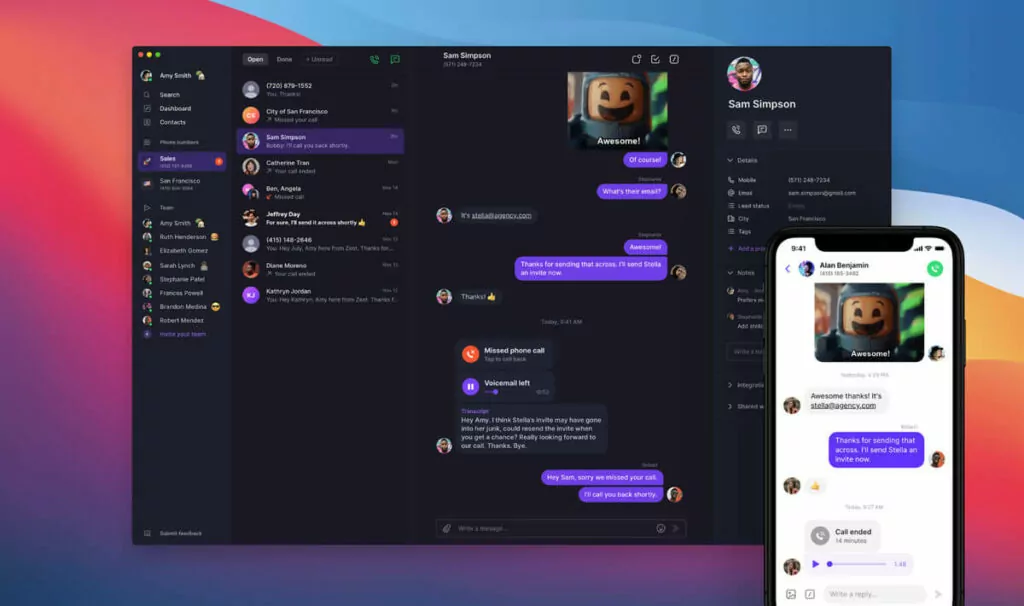
OpenPhone is a VoIP phone system built for small businesses and startups. Like other great second number apps for iPhone, you’ll always know if an incoming call is personal or from a business contact.
But that’s just the tip of the iceberg. You can make free calls and texts to US and Canadian numbers — just choose your own local US, Canadian, or toll-free number. Each user on your plan comes with one free phone number; any additional numbers are just $5 each per month. Plus, you can share phone numbers with your teammates so anyone who’s available can pick up calls and respond to texts on your behalf.
OpenPhone also gives you dozens of ways to streamline your phone communication. You can use an auto-attendant to route calls or use auto-replies to automatically respond to incoming messages and set expectations on when they can expect to hear back from you. You can also integrate OpenPhone with business apps like Slack, HubSpot, Zapier, and Gmail.
Our transparent pricing lets you easily see what you’ll pay and the features you get with each plan. It’s also easy to upgrade as your team grows and your needs change.
Key features
- Option for local US, Canadian, and toll-free numbers
- Free call and texts (SMS and MMS) in the US and Canada
- Call recordings
- Voicemail transcriptions
- Shared phone numbers
- Auto-replies, snippets, and scheduled text messages
- Free number porting
- Integrations with apps like Slack, HubSpot, Salesforce, and Zapier
Pricing
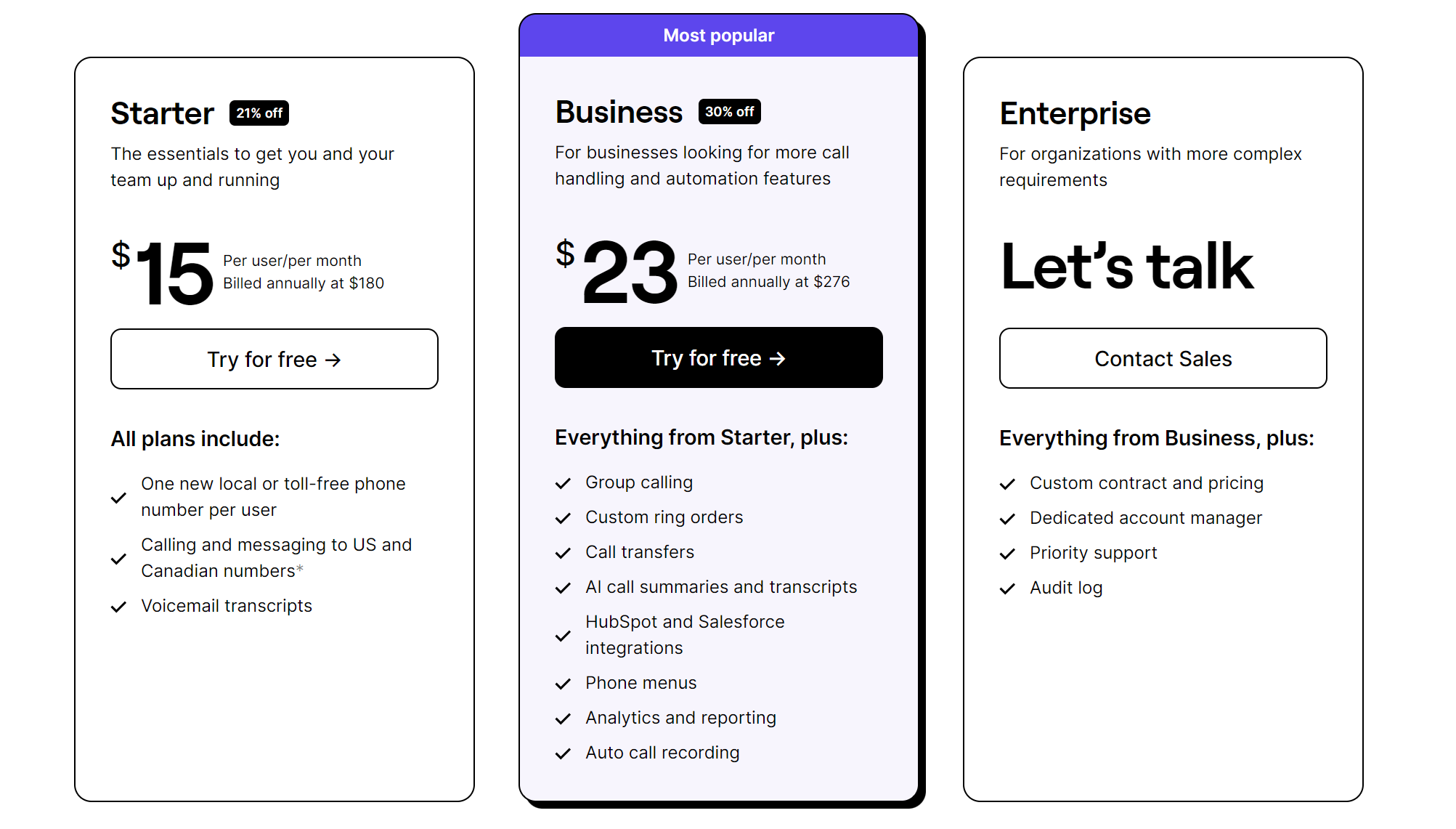
- Starter: $15 per user per month
- Business: $23 per user per month to access analytics, call transfers, CRM integrations, and more
- Enterprise: Contact for custom pricing
You can get a second number in minutes with OpenPhone. Sign up for OpenPhone’s free, seven-day trial. Then download the mobile app for iPhone or Android.
How to get a second phone number with OpenPhone
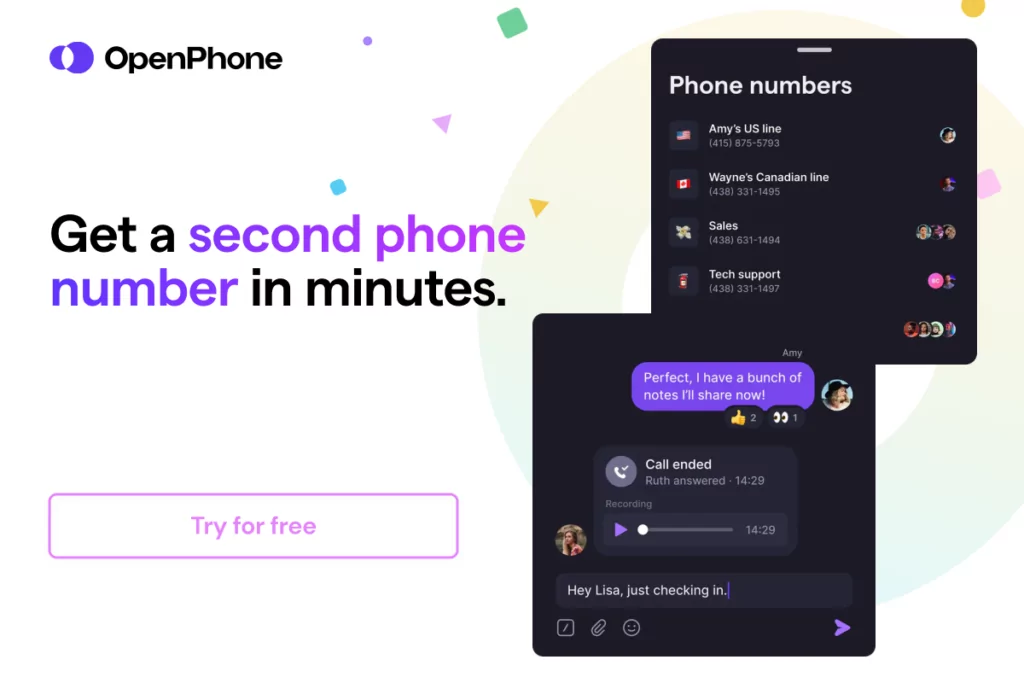
Getting a new phone number from almost anywhere in the world is a simple process when you choose OpenPhone as your virtual phone number provider. Follow these three steps:
- Create an account with OpenPhone (when you sign up, you get a free, seven-day trial).
- During signup, choose your city or area code in the US to select your preferred phone number.
- Once the signup process is complete, you’re all set to use your new second virtual phone number!
2. Google Voice
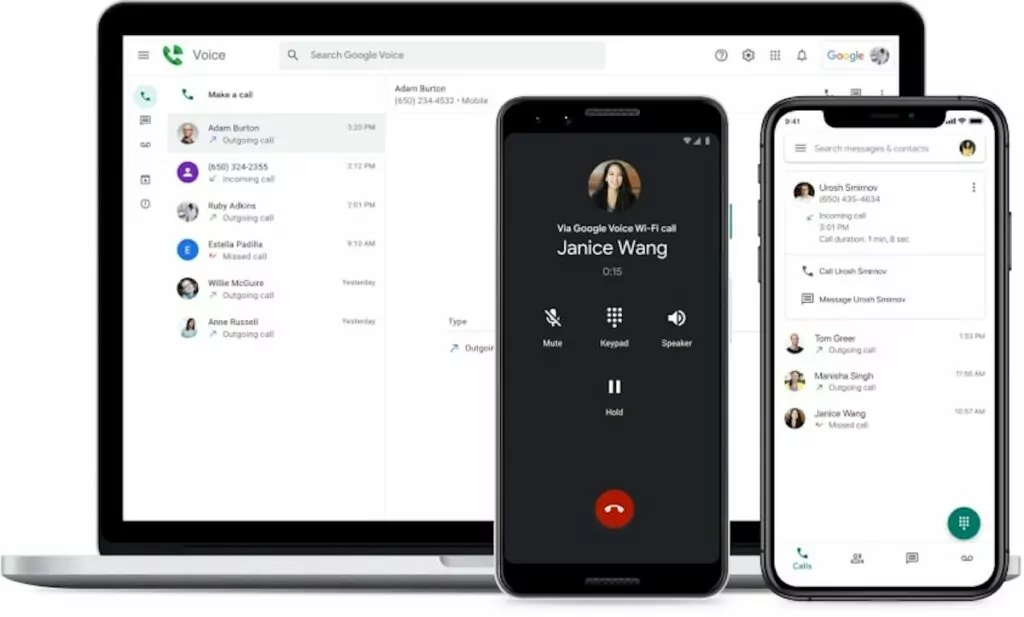
Google Voice is popular among users looking for a free phone number. However, the free plan isn’t fit for business use. You only get one phone number and limited functionality — and the free plan is only available in the US.
Google recommends Google Voice for Google Workspace for business purposes, which offers basics like call forwarding, voicemail transcription, and basic integrations for apps in the Google ecosystem like Google Meet and Google Calendar. However, Google Voice doesn’t offer additional phone numbers like OpenPhone.
The plans start at $10 per user per month for Google Voice’s fairly basic feature set, but you also have to pay an extra $6 per user per month for the required Google Workspace subscription.
Key features
- Unlimited calling to US numbers
- Call forwarding
- Web, Android, and iOS apps
- Voicemail transcriptions
- Call recording (requires upgrade)
Pricing
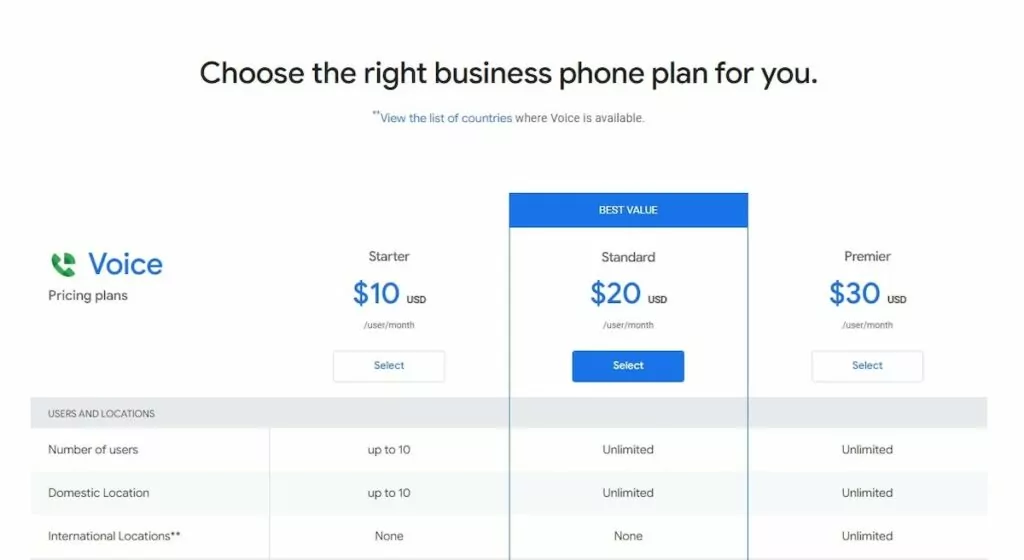
- Starter: $10 per user per month
- Standard: $20 per user per month to access on-demand call recordings, ring groups, and phone menus
- Premier: $30 per user per month to access automatic call recordings and advanced reporting
Plus $6 per user per month for Google Workspace.
3. Sideline
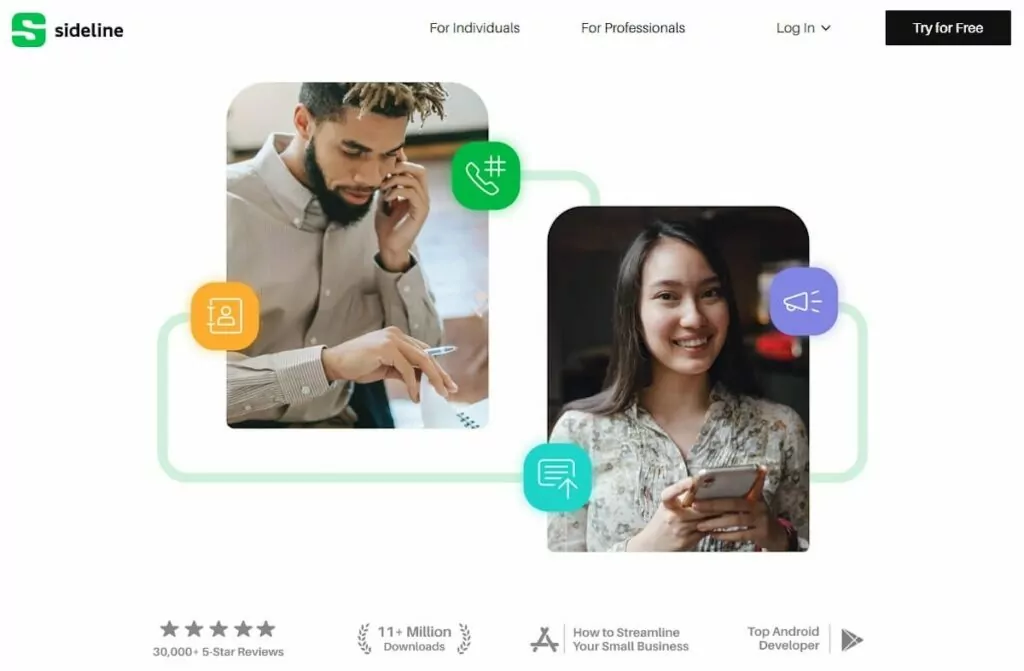
Sideline is among the best second phone number apps, but unlike many other options on the list, it’s not a VoIP system. This means you need to have an existing phone service to make and receive calls. As a Sideline user, you’ll have access to basic communication features like unlimited calling and texting to US numbers.
However, Sideline doesn’t offer much for growing teams. You have to dig around on their support site to get information on all the available plans, but here’s what we found. Toll-free numbers and call recordings aren’t available on any Sideline plans. Basics like international calling and auto-attendants require an upgrade to the Enterprise plan and an add-on cost, while shared numbers are only available on the Team Number plan. With any plan you choose, there’s no way to get all the features Sidelines offers.
Key features
- Unlimited calling and texting in US
- Voicemail to text
- Shared numbers (on the Team Number plan)
- Auto-attendant (available for $9.99 per month with the Enterprise plan only)
- iOS and Android apps
Pricing
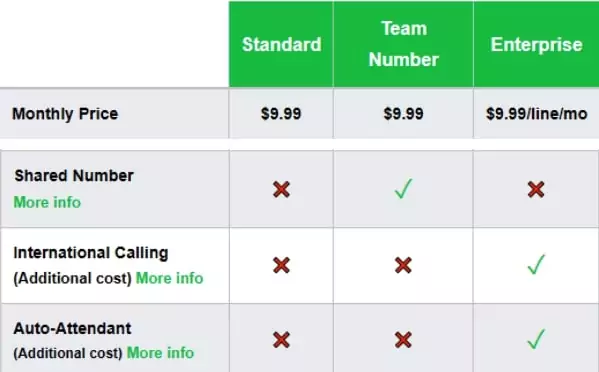
- Standard: $9.99 per month
- Team Number: $9.99 per month to access shared numbers
- Enterprise: $9.99 per line per month to access international calling and auto-attendant (with an add-on)
4. Burner
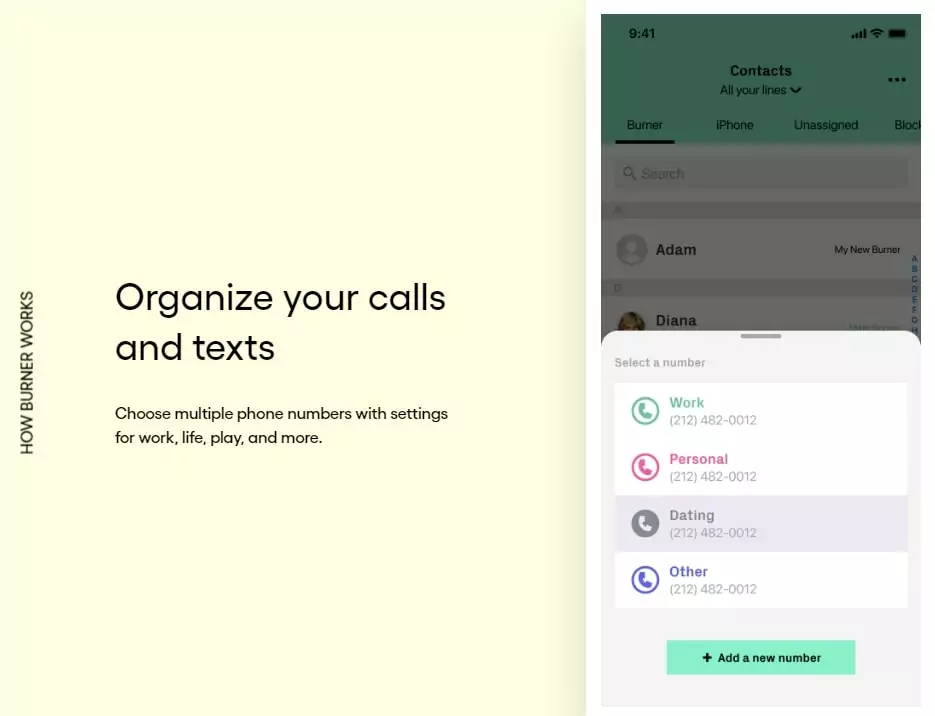
Burner is another second phone number app that isn’t a VoIP phone system. The app lets you quickly set up a Burner number by selecting an area code — no SIM card required. These are disposable phone numbers you can delete or swap when you need to use a different number. Alternatively, you can simply pay for a second line.
You also get features like unlimited calling and messaging, caller ID, picture messaging, and auto-replies.
However, Burner still lacks on various fronts when it comes to needing a business phone solution. It doesn’t offer a desktop app or shared numbers. You can only use Burner on your iOS (or their second number app for Android) cell phone since it doesn’t have a desktop app. Burner is also only available in the US and Canada.
Key features
- Unlimited calling and texting in US and Canada
- Spam call blocking
- Auto-replies
- Caller ID
Pricing
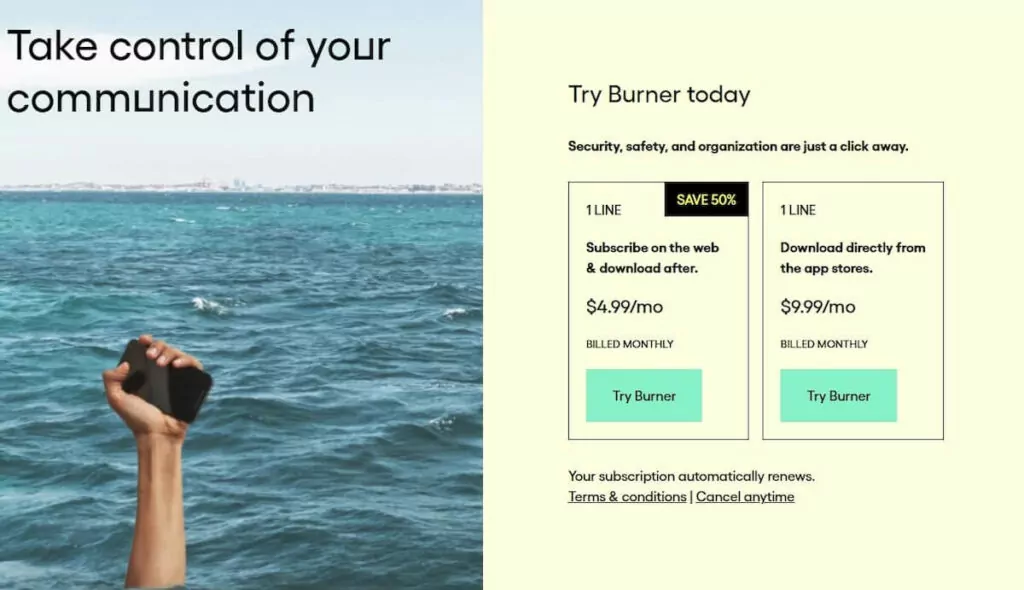
- Starts at $4.99 per month (for 1 line)
5. Cloud SIM
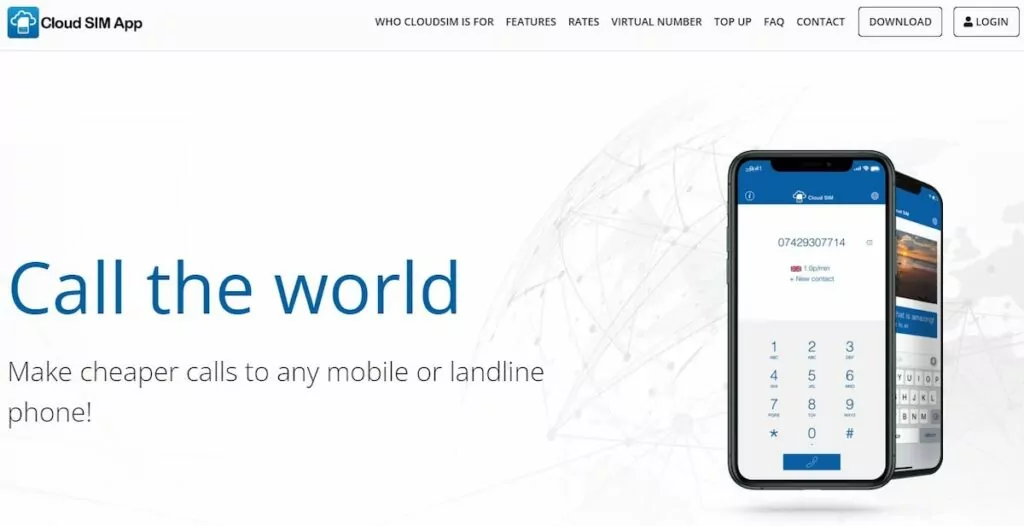
Cloud SIM helps you get a new number you can use to make and receive calls to mobile numbers and landlines across the world. You only get free calls to and from other Cloud SIM users though. Calling rates depend on the destination you want to call.
The app is fairly basic. You get almost none of the features you need to streamline business communication, like shared access to phone numbers, call recording, auto-attendants, or voicemail transcriptions. The app is also only available on mobile phones, not desktops.
Key features
- Outgoing and incoming calls (voice calls are charged by the minute in most cases)
- Low-cost texting (free to other Cloud SIM users)
- Caller ID
- Set availability
Pricing
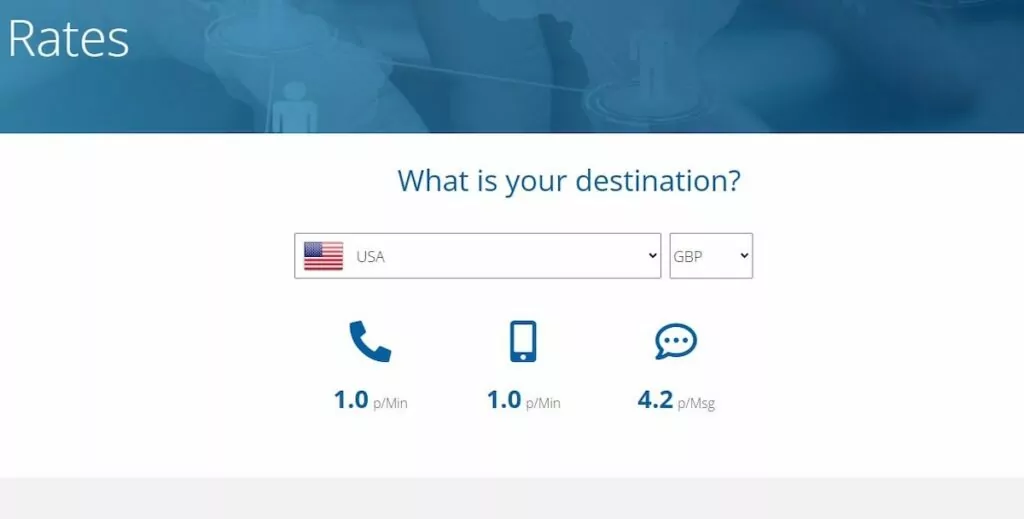
- Rates depend on the destination you’re calling or texting
- If you need additional numbers (up to 4), these costs aren’t as transparent and vary; to find out you’ll have to see the in-app pricing
6. Hushed
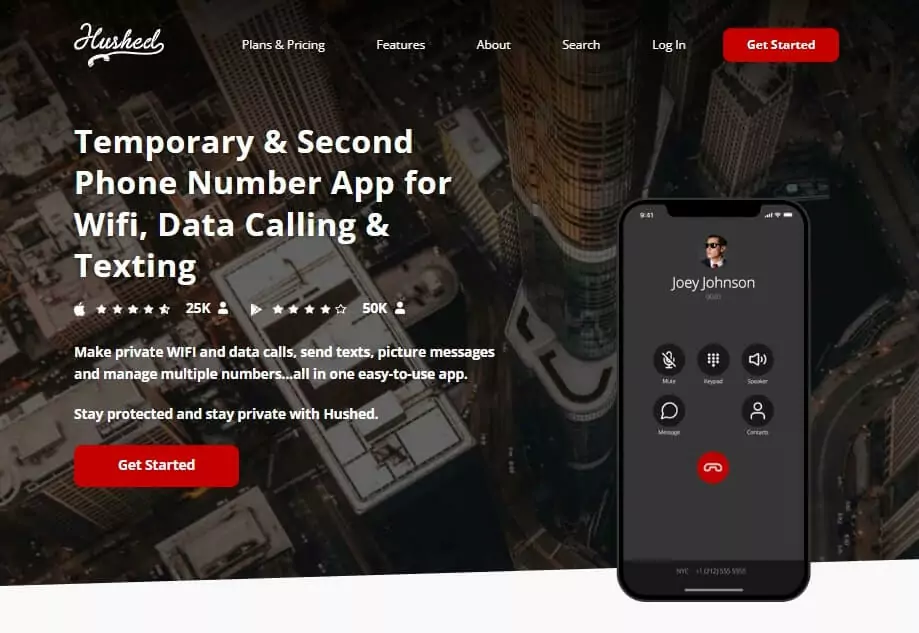
Hushed is a temporary and second phone number app for WiFi or data calling and texting. The low-cost app is a good pick if you need an extra phone number to hide your personal number.
However, if you’re looking to add a business line to your cell phone, you’ll find the app’s feature set lackluster.
You can make and receive calls, send SMS and MMS, forward calls, and integrate it with Slack. That’s pretty much it — you can’t automatically route calls to specific teammates or work together from a shared inbox.
Key features
- Multiple phone lines
- Custom voicemail greeting
- Call forwarding
- Auto-replies
- Dropbox and Slack integration
Pricing
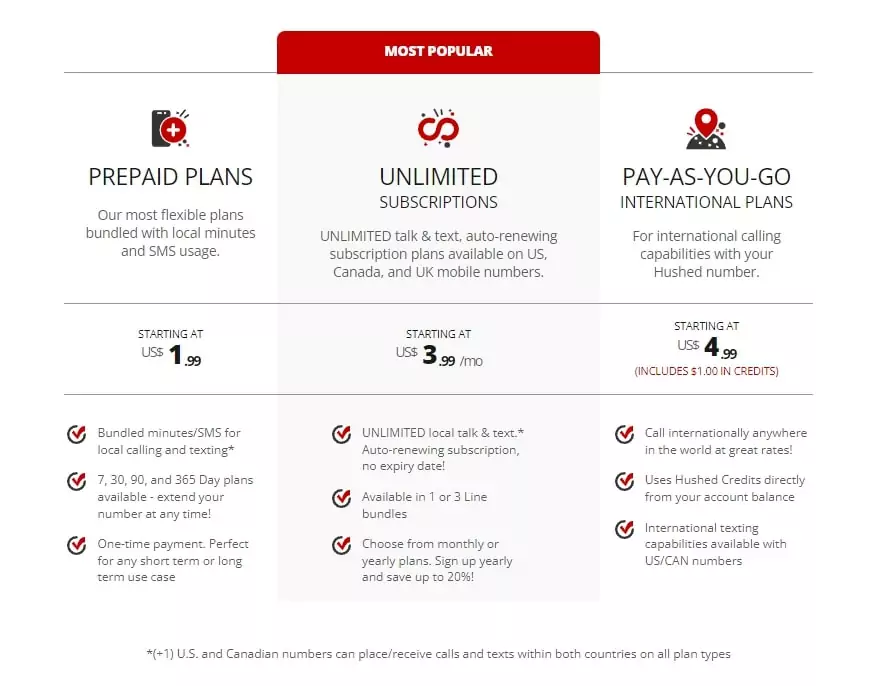
- Prepaid Plans: Starts at $1.99, with 7, 30, 90, and 365-day plans available
- Unlimited Subscriptions: Starts at $3.99 per month, available with 1 or 3 lines
- Pay-As-You-Go International Plans: Starts at $4.99
7. Phone.com
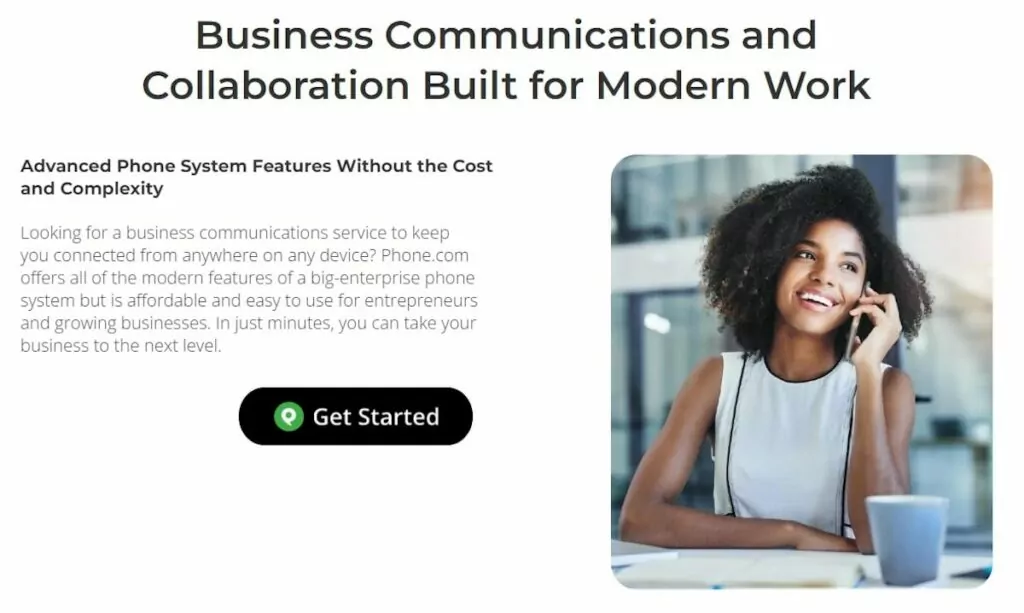
Phone.com is a good platform if you’re looking for the bare minimum. The low-cost app lets you purchase local numbers and send text messages.
However, both calls and texts come with a cap. The basic plan caps calling at 500 pooled minutes and text messages at 1,000 pooled segments. Each segment is a text message with a max of 160 characters. The basic plan only offers one phone number per account. If you need more, you’re forced to upgrade.
Other business-friendly features like shared access to phone numbers, unlimited calling, and voicemail transcription are only available with an upgrade. Also, reviews on G2 from customers say the iPhone app is not intuitive and support doesn’t meet their expectations.
Key features
- Unlimited calling to US and Canada (requires upgrade)
- Shared phone numbers (costs extra)
- Voicemail transcription (requires upgrade)
- Auto-attendant
- Zapier integration
- Mobile and web apps
Pricing
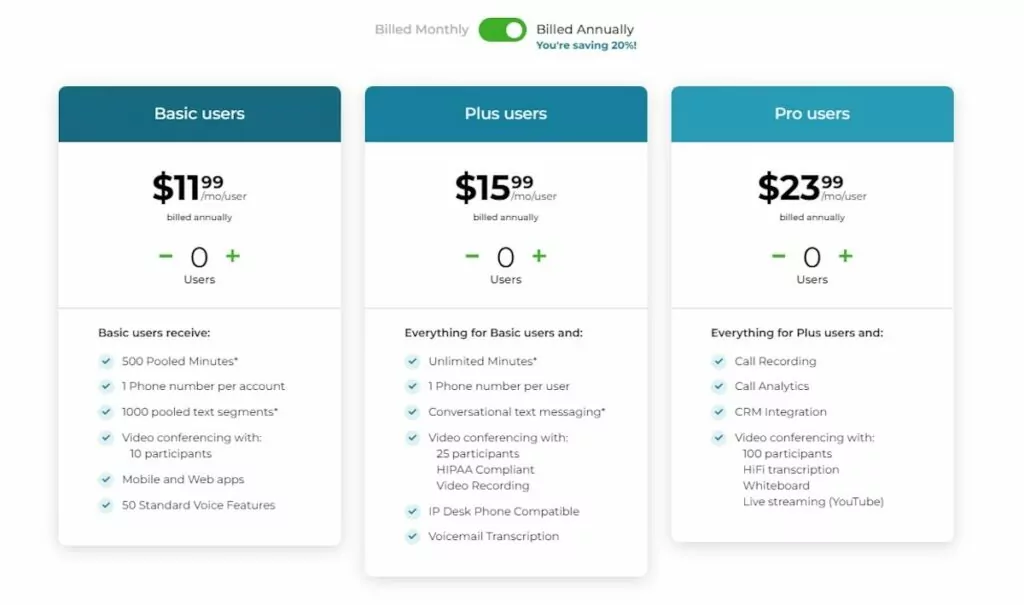
- Basic: $11.99 per user per month
- Plus: $15.99 per user per month to access unlimited calling, voicemail transcription, HIPAA-compliant video conferencing, video recording, and desk phone compatibility
- Pro: $23.99 per user per month to access CRM integrations, call analytics, and free call recording
8. Grasshopper
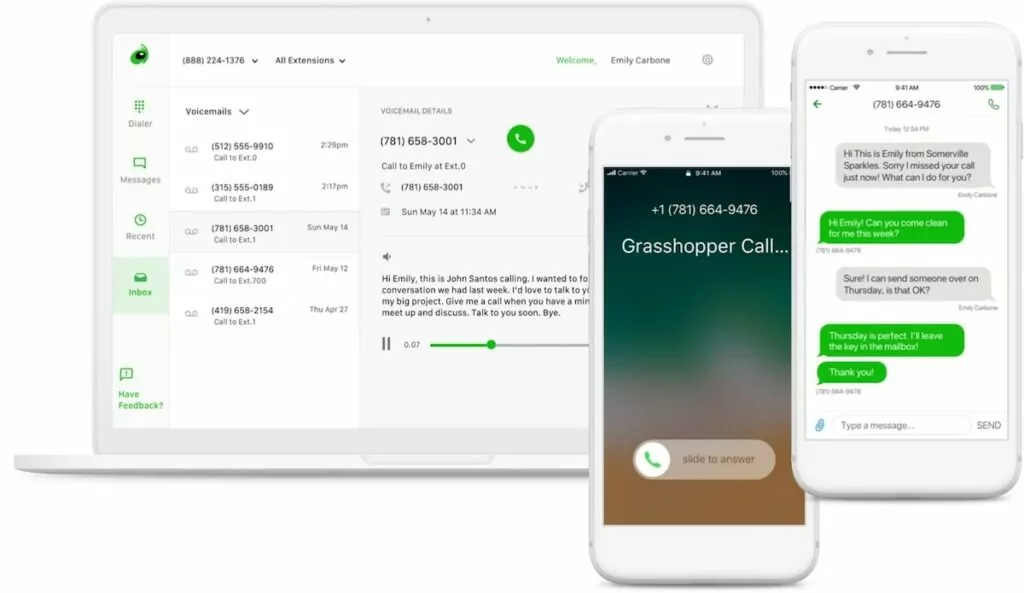
Grasshopper is an older virtual phone system with some features you’d expect to see in a legacy phone system, such as call forwarding and internet fax.
However, Grasshopper lacks the basic features a modern phone system needs. For example, Grasshopper doesn’t offer call recording or shared phone numbers, which enables your team to communicate with clients using a single phone number. Need more virtual phone numbers than your plan offers? It’s an extra $10 per number per month.
The service’s pricing is confusing too. You pay for the number of phone numbers and extensions you need and not per user, which is expensive. For example, you get three phone numbers and six extensions on the mid-tier plan for $46 per month. However, the service recommends using the mid-tier plan for teams of three or smaller.
Key features
- Unlimited phone calls in US and Canada
- Multi-level auto-attendant (IVR)
- Desktop and mobile apps
- International calls (additional rates apply; you must also deposit a minimum of $500 USD)
- Group messaging
- Caller ID
Pricing
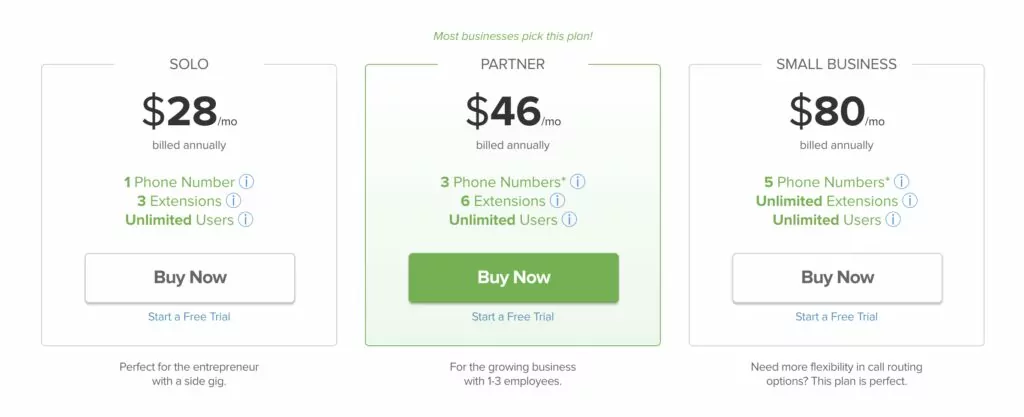
- Solo: $28 per month (1 phone number, 3 extensions)
- Partner: $46 per month (3 phone numbers, 6 extensions)
- Small Business: $80 per month (5 phone numbers, unlimited extensions)
9. Line2
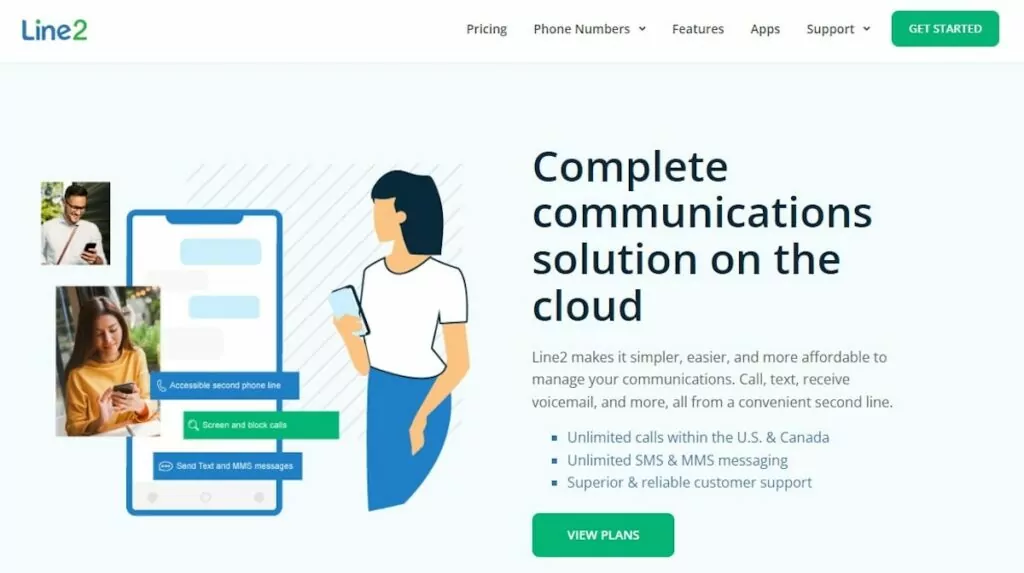
Line2 is a cloud-based phone system that’s been around since 2006. The service offers essentials like call recording, business hours, and voicemail transcriptions.
Need auto-replies, shared numbers, or auto-attendants? Not an option. Line2 only has one plan starting at $13.75 per month ($15.99 if you pay month to month), so you’re paying more for a bare-bones offering.
Key features
- Unlimited calling and texting in US and Canada
- Call blocking
- Call screening
- Voicemail transcriptions
- Call forwarding
- Caller ID
Pricing
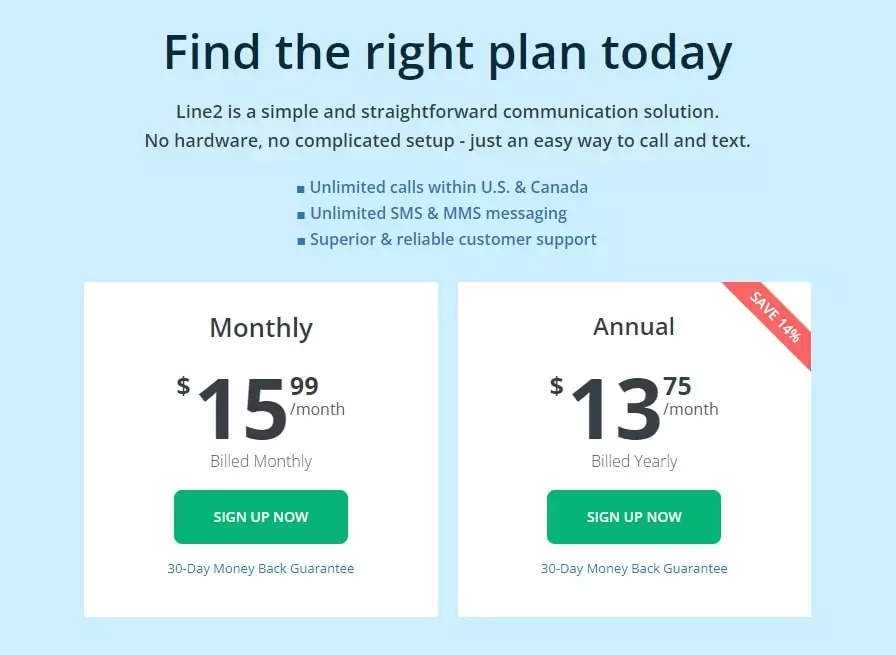
- Annual: $13.75 per month
- Monthly: $15.99 per month
10. Vonage
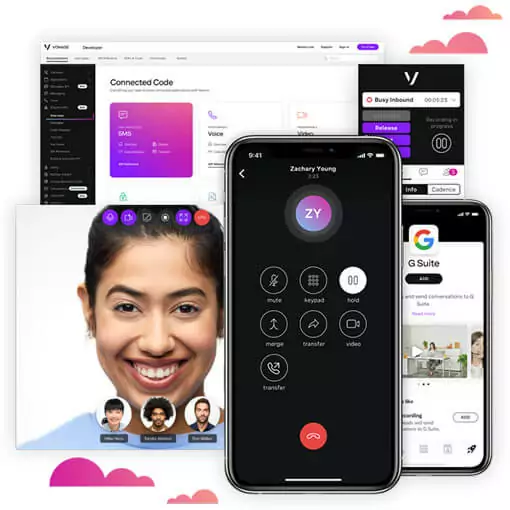
Vonage is a popular business phone system that offers unlimited texting and calling, team messaging, and integrations. But be prepared to spend more on many essential features Vonage locks away as add-ons.
For example, toll-free numbers cost an extra $39.99 per month, while virtual phone extensions cost $24.99 per month. That’s not all — Vonage forces you to upgrade to a higher-tier plan for on-demand call recording, multi-level auto-attendants, and CRM integrations.
The basic plan costs $19.99 per line per month. When you spend extra on add-ons your business needs, you’ll end up paying a lot more.
Key features
- Unlimited calls and SMS in US and Canada
- Virtual phone extensions (costs extra)
- Multi-level auto-attendant (requires upgrade)
- CRM integration (requires upgrade)
- Call recording (requires upgrade)
Pricing
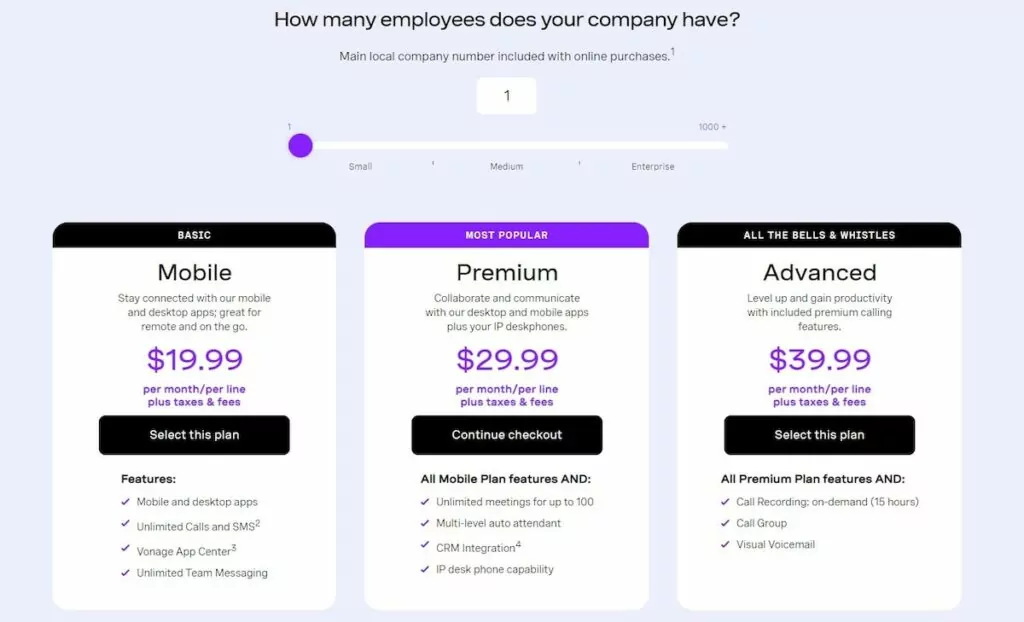
The price per user with Vonage depends on your team’s size. Smaller teams pay more per user each month. For teams of up to 4 members:
- Mobile: $19.99 per line per month
- Premium: $29.99 per line per month to access phone menus, CRM integrations, and desk phone compatibility
- Advanced: $39.99 per line per month to access voicemail transcription, call groups, and on-demand call recordings
5 key features to look for in a second phone number
When there are so many feature sets across apps to compare, choosing the right app can get difficult. To help you decide, we’ve listed a few features you should put at the top of your list when selecting a second number app for iPhone.
1. Mobile and computer compatibility
You or your teammates likely want to work both from their iPhone and computer. Apps with cross-platform support ensure everyone has access to a second phone number on iPhone as well as other devices. OpenPhone has iOS, Android, desktop, and web browser apps.
2. Separate personal and business calls
You can’t always tell if a call is personal or for business when it’s from a number you don’t recognize. Using a second phone number app for iPhone ensures you can always differentiate whether a call is intended for work because you’ll see a different call screen.
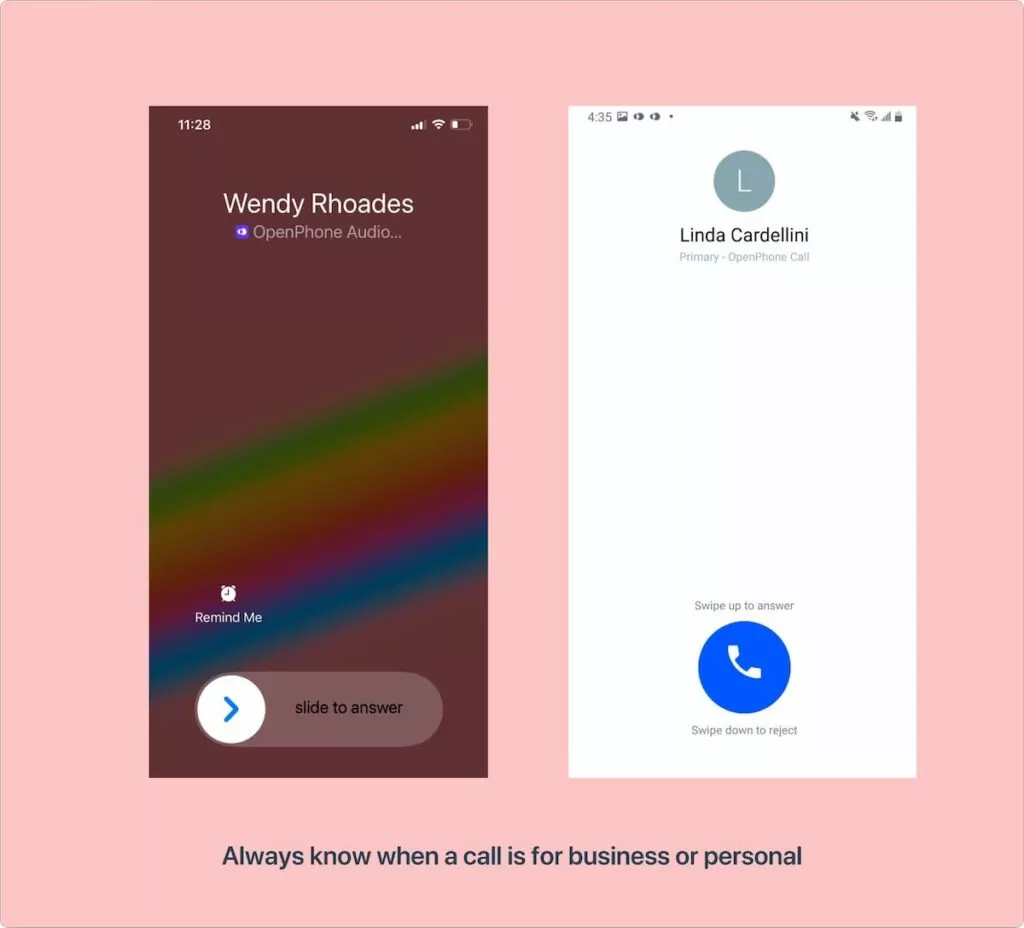
3. Shared inbox
A shared inbox lets teammates work together on client communications. For example, teams using OpenPhone can collaborate on incoming calls and texts via a single inbox.
You can use threads to mention (or tag) teammates on a particular interaction without the client seeing those comments.
4. Call routing
Efficiently routing calls helps save you time. The app you choose should offer phone menus that direct callers to the right person.
You might also need to transfer a few calls and use simultaneous ring, so your teammates can respond to calls on your behalf when you’re unavailable.
5. Integrations and text automations
Integrations are critical because they save you hours you’d otherwise spend entering information manually or completing other repetitive tasks.
Ideally, the app you choose should integrate with the business apps you use the most. Zapier, Slack, and CRMs are great examples.
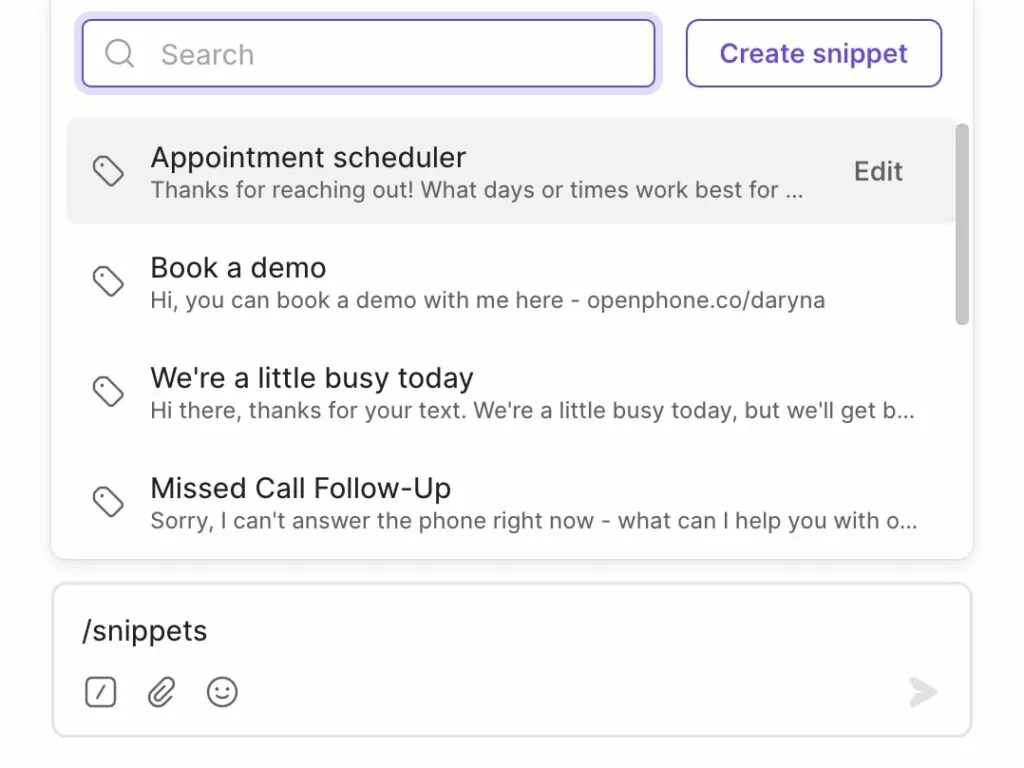
The app should also help save time in other ways, such as automating text responses. For example, OpenPhone offers features like auto-replies and snippets to save time when responding to client texts.
The best app for second number for iPhone: OpenPhone
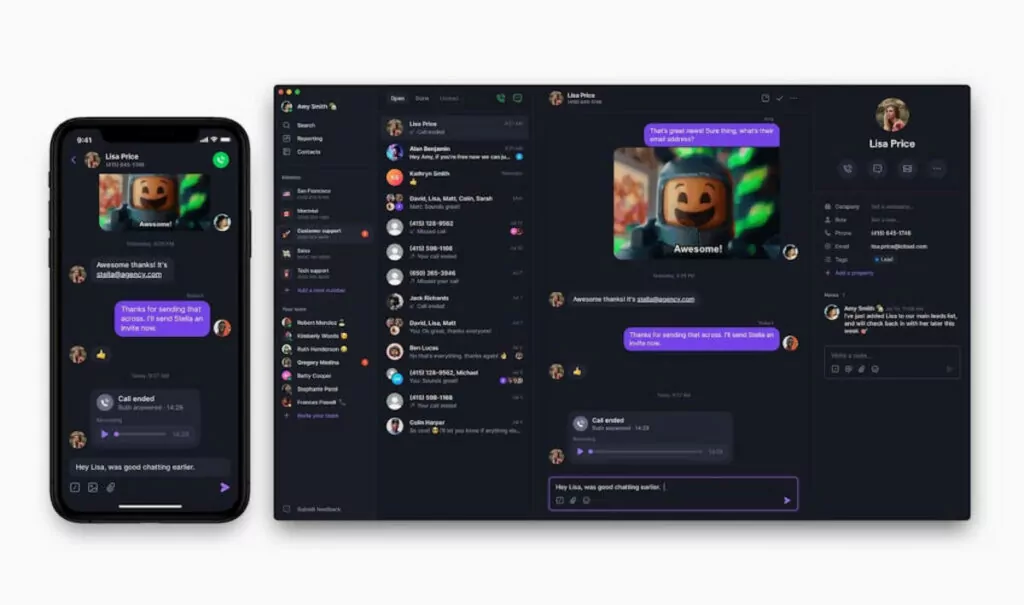
A second phone number helps separate business and personal calls. A VoIP phone system like OpenPhone ensures you can get a second phone number and a comprehensive set of features tailor-made for growing teams.
With OpenPhone, you can share phone numbers, integrate with the most popular business apps, and most importantly, develop better relationships with your customers. Try OpenPhone today with a free, seven-day trial.
